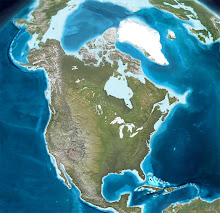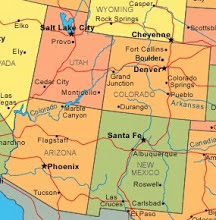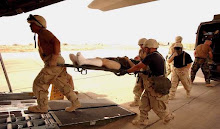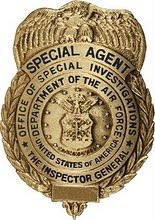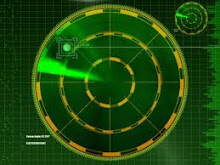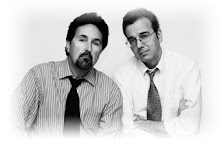By Steve Hammons
Recent news stories have carried accounts of two legally blind American golfers hitting holes-in-one. And a legally blind woman in the UK made a “Robin Hood shot” at her archery range, splitting her first arrow already in the target with her second shot.
These kinds of incidents may seem like miracles or dumb luck.
Or, maybe they are examples of what researchers in human perception call “anomalous cognition” or “remote viewing.” Another term is “extrasensory perception” or “ESP.”
These are concepts, well-researched and documented by researchers, that try to give names to the human abilities of accurately perceiving aspects of situations around us using our internal instincts, intuition, gut feelings, hunches, visualization, situational awareness and other similar methods.
The U.S. Government’s Project STAR GATE of the 1970s, ‘80s and ‘90s found that military and intelligence personnel could learn to perceive information about situations not available to them through their normal five senses of sight, hearing, touch, taste or smell.
They could perceive faraway places, events and other information internally.
We probably see amazing examples of this all around us. But do we recognize these unconventional occurances within others and within ourselves?
HOLES-IN-ONE, “ROBIN HOOD SHOT”
For example, an April 11 news report by the Associated Press told the story of the 85-year-old legally blind golfer in Arizona who made a hole-in-one recently at a golf course in Green Valley, near Tucson.
Robert Dunham, a former World War II paratrooper in the Pacific, was at a golf course in an activity coordinated through a blind veterans rehabilitation program of the Veterans Affairs health care system in southern Arizona.
Dunham started losing his sight ten years ago and had only been in the VA golfing program for three weeks.
His hole-in-one shot amazed fellow veterans and the VA staff watching, as well as Dunham himself.
Green Valley News reporter Nick Prevenas wrote in an April 8 article that Dunham had played golf for nearly 30 years but Dunham “said last week's fateful shot was the first time he had come anywhere near a hole-in-one.”
And then there is the April 5 news story in the St. Petersburg Times, Florida, newspaper about 92-year-old legally blind Leo Fiyalko’s hole-in-one shot on Jan. 10.
Fiyalko said that it was his first shot of the day golfing with his “Twilighters” golf buddies. He said it was his first hole-in-one in 60 years of golfing.
The Times article noted that, “Fiyalko has learned something. He admitted to being a little reluctant to talk about the shot for the first few weeks. Now he knows it is inspirational, and he's embraced it.”
Yes, it is inspirational. And maybe it is something more. Maybe events like this are examples of human perception that is not dependent on sight or other senses of sound, touch, taste or smell.
A March 27 article in the UK newspaper The Telegraph reported that 74-year-old Tilly Trotter started archery two years ago after being encouraged by her granddaughter to try it. Trotter lost much of her sight 17 years ago after a head injury.
While at the archery range one day with her husband, the amazing “Robin Hood shot” surprised everyone present.
Trotter was quoted as saying, "The second arrow made such a noise going into the back of previous arrow I thought I had hit the ceiling or done some expensive damage. Then I heard people jumping up and down shouting that I'd done a Robin Hood. It was a one-in-a-million shot and a bit of a fluke really."
What do golfers Dunham, Fiyalko and archer Trotter have in common other than being legally blind, up in years and being involved in sports where the goal is hitting a small target with hand-held tool that launches a small projectile?
In all three cases, these individuals also had helpers nearby who generally pointed them toward the target, the golf green or archery bullseye, and gave them feedback on their shots.
How did this communication and sensory perception by the nearby friends, family or helpers who were able to see affect these apparently miraculous or very lucky shots?
CONTINUING RESEARCH
Maybe some researchers somewhere should take a look at these and other individuals. In decades of research on the phenomena of anomalous cognition and remote viewing, it has been clear that some people have natural abilities to perceive in ways other than, or in combination with our normal senses.
These abilities, however, are believed to be within each of us. We can learn to make the most of them by paying attention to them and learning more about these traits.
They are most likely also present in animals that rely more on instincts and natural kinds of perception than we humans who often depend on our logical, or illogical, brain and thinking.
We are also probably able to consciously or unconsciously optimize the use of these perceptual abilities based on the circumstances.
For example, when there is danger or survival may be at stake, we might naturally try to draw on all available resources within us, whether physical, mental, emotional, spiritual or even in the realm of unconventional, such as anomalous cognition, remote viewing and ESP.
If a loved one is in danger, we might get a particularly troubling gut feeling. If we meet a stranger and we feel danger, maybe we are perceiving a real threat.
People who have experienced dangerous situations in the past might have cultivated these abilities. Maybe other life experiences also enhance these human traits.
A military or intelligence “remote viewer” might get better results when they are working on something that is of crucial importance.
A peace officer on patrol may find that their “cop instincts” kick in when something important demands their attention.
Even a police or military canine might use dogs’ natural sensory and other perceptual resources in expanded ways in certain safety-related situations.
As part of declassified information about the Project STAR GATE research and operations, it is known that dolphins were reportedly tested in regard to anomalous cognition and remote viewing factors. This might make us wonder if the well-known sonar capabilities of dolphins and other marine mammals have similarities in us land animals.
The U.S. Navy has a very active Marine Mammal Program, based in San Diego, that works with and deploys Navy dolphins for various missions and operations. It is not clear from Project STAR GATE reports if that research involved Navy dolphins.
It is known that in certain martial arts, students are blindfolded and told to perceive their opponent through means other than their eyes.
In the 1977 movie "Star Wars," mentor Obi-Wan Kenobi blindfolds student Luke Skywalker while training with the light saber weapon and trying to hit a moving target darting around him. "Use the Force," Kenobi tells Luke, referring to a reality he believes is around us and within us. We can use the Force and it uses us, he tells Luke.
But whether we are talking about martial arts fighters, blind golfers and archers, dogs and dolphins or the rest of us, it is clear that we have the ability to perceive that not only includes our five senses, but also involves a "sixth sense" and maybe more.
How are these perceptions related to psychology, spirituality, biology, physics and some kind of animal or human radar or sonar?
And what really does “luck” and “coincidence” mean? Is there something more going on when certain circumstances come together in interesting and unusual ways?
Some researchers call this “synchronicity,” meaning that so-called coincidences may often be something much more.
As we explore these and other fascinating elements of our world, and inside each one of us, maybe we too will hit a hole-in-one in some way like Robert Dunham and Leo Fiyalko. Maybe each of us can make a “Robin Hood shot” of some kind in our own lives, like Tilly Trotter.
The old saying about our ability to perceive and understand is true about many things, including phenomena like anomalous cognition and remote viewing: “There are none so blind as those who will not see.”
Saturday, April 12, 2008
ESP involved in blind seniors' holes-in-one, 'Robin Hood shot?'
Sunday, April 6, 2008
Points of Interest in 'Mission Into Light'
CHAPTER 7: NEW MEXICO
In Las Cruces, New Mexico, Joint Reconnaissance Study Group members Mike Green and Army Special Forces Captain Bill MacNeil interview Dr. Brenda Carruthers, associate professor of anthropology, New Mexico State University, about unconventional research topics. She was once a researcher in a project similar to the JRSG's, they learn.
CHAPTER 10: NAVAJO INTEL
Former U.S. Marine and World War II Navajo Code Talker Joe Bear has a vision during a sweat lodge with three fellow former Code Talkers near his home on the Navajo Nation in northeastern Arizona. Joe sees things that are troubling, and others that are hopeful. He and his fellow Code Talkers gather intelligence in their visions.
CHAPTER 12: INTO THE MOUNTAINS and CHAPTER 13: THE DISC IN THE MEADOW
On an operation in the Sedona, Arizona, region in the Red Rock-Secret Mountain Wilderness Area, Mike has a near-death experience and enters into an apparent DNA deep-memory phenomena, or maybe time travel, or both, or some other unusual experience. He learns about connections between UFOs, extraterrestrials and Native Americans in the era before Europeans entered into the ancient Cherokee homeland in the Smokey Mountain region. He also learns about pending unconventional developments.
CHAPTER 16: VISIONS OF HAWAII and CHAPTER 17: EARTH CHANGES
JRSG member Air Force Captain Amy Mella has a vivid dream about a huge catastrophe on Earth, possibly geological in nature. She and Mike meet with fellow JRSG member Navy Commander Dan Wells to discuss Wells’ knowledge about theories of Earth geological changes, including crustal displacement and crustal pole shift theories.
CHAPTER 20: UFO OVER PHOENIX
Based on the real-life 1997 event that made national and international headlines, multiple witnesses in Arizona and the metro Phoenix area see a large triangle or boomerang-shaped craft drift silently over the city, going from northwest to southeast, one evening.
CHAPTER 23: HIDDEN CANYON and CHAPTER 24: UNEXPECTED GUESTS
At a special seminar of sorts in an ancient kiva, at the bottom of a hidden canyon near the Monument Valley area, dozens of guests and VIPs witness, and experience, a strange anti-gravity phenomenon. As this unfolds, other unusual and urgent developments at the top of the canyon include the appearance of a triangular-shaped craft that plays a key role in the final climax.
Points of interest in 'Light's Hand'
CHAPTER 1: MESSAGES
Two National Security Agency officials visit WWII Marine Code Talker veteran Joe Bear at his home on the Navajo Nation in northeastern Arizona. They ask him to interpret signals the NSA has picked up coming from deep space. The signals are in Morse Code and World War II Marine Corps Navajo Code Talker code.
CHAPTER 10: NEW INTEL
In the Four Corners region of southwestern Colorado, Mike Green, Air Force Captain Amy Mella and CIA analyst Jennifer Thorsen interview Dr. Ben Westman, former Army intelligence major and anthropology professor at Fort Lewis College in Durango about unconventional research topics.
CHAPTER 13: RECON
Air Force Colonel Tom O’Brien, commanding officer of the Joint Reconnaissance Study Group, returns to San Diego from top secret briefings and meetings back east. He contemplates the implications of what he has learned and how these things fit into the mission of his group.
CHAPTER 16: STORY TELLER and CHAPTER 17: THE OLD DAYS
Mike, Amy Mella and Jennifer Thorsen, while in Flagstaff, Arizona, visit a book-signing at a local bookstore by a Cherokee author and story-teller. He tells a story strikingly similar to the vision Mike was given by his grandparents during a near-death experience in Mission Into Light. In that experience, he seemed to go back in time, and into his own ancient DNA of his Cherokee ancestry to a strange incident. Mike, Amy and Jennifer then conduct a field interview with the author to obtain more information.
CHAPTER 18: READY FOR ANYTHING and CHAPTER 19: DEPLOY TO LIGHT
Many developments begin to converge, including increased global appearance of crop circles, detection of undersea fault activity by Navy dolphins and other matters. Members of the Joint Reconnaissance Study Group continue their operations and prepare for a possible significant event to occur as part of, yet distinct from a steady process they have become aware of. Suddenly, in the early morning hours on the north side of Phoenix, a strange light slowly and gently emerges. Public safety personnel and the JRSG members respond to the scene and find that something very significant is occurring ... something that changes the world.
Adventures of the Joint Recon Study Group
EXPANDING THE MEANING OF “INTELLIGENCE”
The word “intelligence” takes on new meaning in my two novels. The books follow the exciting adventures and discoveries of a San Diego-based top-secret intelligence team of ten women and men.
In "Mission Into Light" and the sequel "Light's Hand" members of the Joint Reconnaissance Study Group conduct research on mysterious topics that have captured the interest of millions of people worldwide.
Readers join the research team in the exploration of strange and unknown phenomena, and of themselves.
Right now, the human race needs all the intelligence we can get our hands on. Intelligence in the broadest meaning of that word.
The dedicated members of the JRSG intelligence team conduct investigations into current and future human evolution, deep-memory DNA theories, ESP, near-death experiences, Navy dolphin projects, past and future Earth geological disasters, UFOs, crop circles, and ancient Native American culture and legends.
They travel from San Diego to the Arizona Sonoran Desert; Sedona, Arizona; the “Four Corners” area; Durango, Colorado, in the southern Rockies; New Mexico; and Oahu, Hawaii.
The researchers try to put together pieces of a strange cosmic puzzle. They conduct urgent operations to understand emerging intelligence affecting the United States, the human race and planet Earth.
Sudden, seemingly miraculous events surprise even the most open-minded and hopeful members of the group.
Or maybe these events and processes are just natural. Maybe Nature, Earth and the Great Spirit are revealing phenomena the human race is finally ready to understand.
SYNOPSIS OF 'MISSION INTO LIGHT'
What starts out as a phone call and job offer to forty-something Arizonan Mike Green quickly evolves into a mystifying adventure into the unknown.
Mike is recruited into a quasi-scientific Defense Department research team based in San Diego. He starts his job with the Joint Reconnaissance Study Group. Ten women and men comprise the JRSG. Several loyal allies, and deadly opponents, soon emerge.
The JRSG and its friends search for information on unusual national security-related issues and mysteries. Connections between these areas are discovered as well as links to the past and the future of Earth and the human race.
The women and men of the research group explore ancient questions and modern discoveries crucial to the evolution and survival of humanity. Group members explore Arizona, the “Four Corners” region, and Oahu, Hawaii.
They face experiences that are scientific, physical, mental, emotional, and spiritual. The group uncovers dangerous threats to their investigation, to the United States, Earth, and human civilization.
Mike feels he’s getting in over his head at times. Even with the support and fellowship of the research group and friends, he faces extreme circumstances alone.
In the midst of dangers and challenges, there is romantic heat between him and Amy Mella, one of the group’s dolphin researchers.
This is also a story of relationships between women and men, military and civilian, the intelligence community and the average American. It is an exploration of phenomena and mysteries that now rightly hold the interest and attention of millions of people worldwide.
The novel climaxes in a hidden canyon on the Navajo Nation in far northeastern Arizona. In a kiva, one of the large sunken stone circles of the ancient Anasazi people, many VIPs attend a special field conference. Sudden discoveries, dangers, and the experience of the strange unknown shock those present.
The characters in "Mission Into Light" follow paths of discovery and knowledge to find new understanding of their nation, the human species, and the hoped-for breakthrough that will change the world.
SYNOPSIS OF 'LIGHT'S HAND'
In this sequel to my first novel, "Mission Into Light," I share with readers the continuing thought-provoking metaphysical adventure with the top secret Joint Reconnaissance Study Group.
This small Defense Department research group of ten women and men moves forward with their intelligence investigation of unusual phenomena: UFOs, near-death experiences, ESP, dolphin intelligence, modern physics, Earth changes theories, deep DNA memory concepts, and Native American culture and legends.
Other strange phenomena emerge and challenge the researchers, who travel from their San Diego base to the Four Corners area; Durango, Colorado; and Flagstaff, Arizona; as well as the Arizona Sonoran Desert.
The main characters, Mike Green and Air Force Captain Amy Mella, are deployed to the Navajo Nation in northeast Arizona after the National Security Agency reports a strange signal coming from deep space. The message is in Morse code, and in the World War Two Navajo Code Talker code.
In the midst of urgent developments in and around the Four Corners area, Mike and Amy explore the depths of their love relationship and learn more about each other. About their passion, and compassion.
The dedicated researchers put together pieces of a cosmic puzzle just in the nick of time. Because strange and mysterious developments are underway. A sudden increase in crop circles, requests for safehouses on higher ground, and an ancient Cherokee legend are parts of this puzzle.
A breakthrough occurs when a strange event and process kick the researchers into high gear, and the group acts as a rapid response team to the site of a possible miracle.
Organization, Operations and Personnel of the Joint Recon Study Group
JOINT RECONNAISSANCE STUDY GROUP
MISSION IDENTIFICATION:
The Joint Reconnaissance Study Group (JRSG) is a research entity designed to utilize the resources of the Department of Defense and national intelligence services in the missions to be defined by the Congress of the United States, Joint Chiefs of Staff, and the president of the United States.
JRSG personnel will endeavor to investigate intelligence-related matters deemed relevant to the national security of the United States of America.
Areas to be explored by JRSG will be regarded as TOP SECRET/SCI, using the compartmented code word BOONE. Need-to-know protocol will be in force. Study groups within JRSG will be compartmented to the degree necessary.
Cross-fertilization of data and intelligence will be at the discretion of study group team members and the commanding officer of JRSG. Research and investigative findings will be compiled and interpreted by the senior officers on each team and submitted to the JRSG CO for communication to higher command authorities.
GROUP STRUCTURE AND PERSONNEL:
JRSG teams will be structured as follows to enhance cross-service, and cross-agency cooperation and communication. Initial organization of study teams include three, three-person groups. The JRSG CO, Colonel Thomas O'Brien, U.S. Air Force, will have direct command and full discretionary command and control.
- Team One: Commander Daniel Wells, U.S. Navy; Lieutenant Commander James Etienne, U.S. Navy; Captain Amy Mella, U.S. Air Force
- Team Two: Colonel Edward Thompson, U.S. Army; Captain William MacNeil, U.S. Army; Michael Green
- Team Three: Colonel Gene Voss, U.S. Marine Corps; Major Karen Valdez, U.S. Air Force; Jennifer Thorsen
AREAS OF RESEARCH:
JRSG teams will conduct broad-based, yet narrowly focused research and investigations into areas as identified and directed by the JRSG CO. These areas will include, but will not be limited to, the following general categories:
1) Unidentified flying objects (UFOs): Alleged abductions of humans by same. Reported technology and method of operations.
2) Extra-sensory perception (ESP): Alleged perception of information available to human beings through means other than the five senses.
3) Near-death experience (NDE): Alleged contacts with Heavenly persons and afterlife-type phenomena reported by persons experiencing clinical death.
4) Research in sub-atomic and quantum physics and how these fields may affect or illuminate the above areas.
5) DNA and other genetics studies and how these fields may affect or illuminate the above areas.
6) Native American culture and history and how it may affect or illuminate the above areas.
7) Cross-theoretical/cross-cultural religious and philosophical studies and how they may affect or illuminate the above areas.
METHODS AND GOALS:
JRSG personnel will conduct field interviews and other information and intelligence gathering tasks as directed by the JRSG CO. JRSG teams will pursue intelligence and reconnaissance based on their investigative discretion and initiative.
Senior officers Commander Daniel Wells, Colonel Edward Thompson, and Colonel Gene Voss will report directly to the JRSG CO. JRSG CO Colonel Thomas O'Brien will report directly to the National Security Council, Joint Chiefs of Staff, and the president of the United States.
JRSG teams will endeavor to conduct reconnaissance on the seven general areas of study and maintain security of the intelligence collected. The JRSG will be granted the full cooperation of all military commands and civilian governmental agencies. Reports will be channeled from JRSG field teams to the JRSG CO on an as-needed basis at the discretion of senior team officers.
Joint Recon Study Group looks into emerging breakthrough
Brief Overview of Mission
Can the human race make a breakthrough that will change the world? Special reseachers could be working on this very thing.
Many people hope for some kind of breakthrough into a new world, where the human race can make progress and discover greater peace and prosperity. Some people hope for and believe that a miracle of some kind might happen.
Will the natural world change in some way? Might we become more aware of other hidden dimensions around us? Could spiritual beliefs and views of Heaven and Earth actually prove to be based on scientific realities?
What part do UFOs and other unusual phenomena play? Is human consciousness changing, as we discover more about ESP and things like "remote viewing?"
We know that many people are researching and working on questions like this. What have they found? And what might it mean to all of us?
Some of us are hopeful. Some of us are cynical. Some of us hope for the best and prepare for the worst.
In my novels, "Mission Into Light" and the sequel "Light's Hand," ten women and men are brought together in a special joint-service team for a sensitive and classified intelligence research project.
From their base in San Diego, they conduct research on several interesting areas, some seemingly unrelated. But, they keep getting indications that something may happen: a breakthrough process and event of some kind.
They suspect that the paths of research they are following will lead them to some kind of success. Success for their fellow Americans, for the human race and for planet Earth.






























